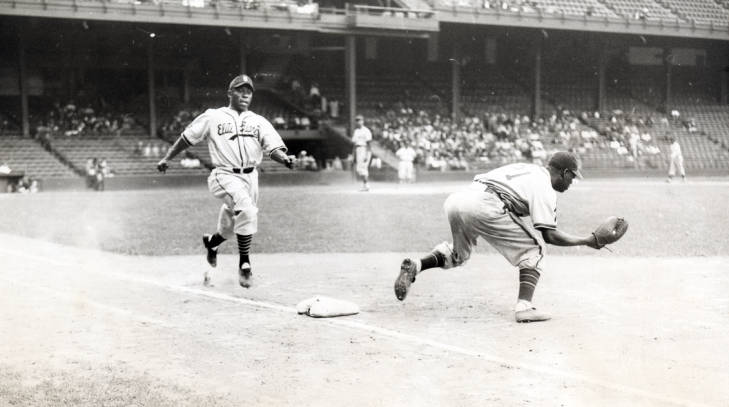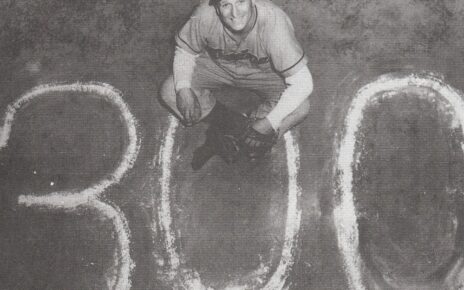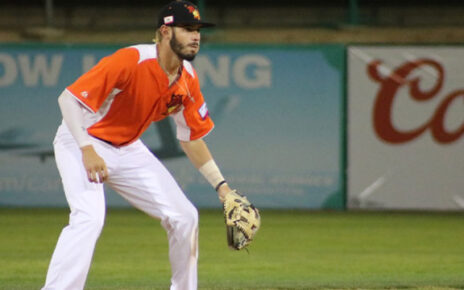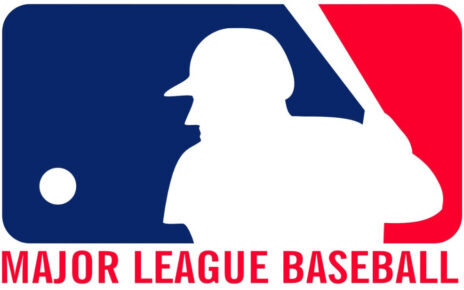The last few years of the Negro major leagues are a subject often ignored by everyone but the most ardent baseball fans. By the time 1950 rolled around the Negro American League was playing the last season of major league baseball from a Negro League. This was all thanks to what happened on April 15, 1947. That’s when Jackie Robinson made his National League debut for the Brooklyn Dodgers. Owners in both the NAL and Negro National League knew what Robinson’s arrival to the major league ranks meant. More players followed suit and the end was quickly approaching.
It’s for the above reason that the time period of 1947-1950 has never received the coverage it deserves. The folks over at Seamheads are doing their usual thing and working to put together as much of a history of the Negro Leagues as is possible. It’s due to their work that we know about a player like Henry Kimbro. He’s one of the players who shined brightest in the waning days of the NNL. From 1946-1948 he was one of the premier players in the entire league.
In 1947 the center fielder put together his most impressive season. Playing for the Baltimore Elite Giants he accumulated an sWAR of 4.1 in 63 games, mostly for his offensive contributions. On defense, Kimbro was no great shakes, his RF/9 of 2.35 was right around league average. The Tennessean wasn’t on the Elite Giants for his fielding, he was there to hit.
Hit away is exactly what Kimbro did over his 273 plate appearances. He slashed .384/.448/.624 with 8 home runs, 24 doubles, and 5 triples. The man they called Jimbo wasn’t your slugger of today, rather he was the prototypical late-era Negro major league slugger. He had great gap-to-gap power and the wheels to turn those gappers into doubles and triples. That doesn’t mean that he couldn’t deposit the ball over the fence, because projected to a 162 game schedule Kimbro would have amassed 20 homers in 1947. What should really grab your attention is that Kimbro’s projected doubles total for the year ends up at 61. That would place him 6th on the all-time Major League Baseball single-season leaderboard.
I mentioned speed earlier and in the case of Kimbro, we have to go on anecdotal evidence over hard stats. I can tell you that he stole 11 bases in 1947 and legged out 5 triples. What I can’t tell you is how many times he was caught stealing, because that is a stat that was inconsistently kept throughout the history of the Negro major leagues. Word of mouth about Kimbro is that he was such a successful doubles hitter because of his base-to-base speed. If enough people say it’s true and the stats we do have are in concordance with such a claim then I see no reason to doubt what the anecdotal evidence is telling me.
Kimbro finished the 1947 season with an OPS+ of 188. That’s a good table-setter for how complete of a hitter he was in the NNL’s penultimate season. He also put together a wOBA of .484 and an ISO of .240. Jimbo got on base, hit for power, and once on base he was a threat to advance at any moment. A BB% of 33.3 is kind of startling, but it speaks more truth to Kimbro as a quality hitter at all facets of the game as opposed to simply being a masher.
From 1946-48 Kimbro was among the best the NNL had to offer. He totaled 10.4 sWAR in that period and stood out in an era that doesn’t get the attention it deserves. In 1948 he helped guide Baltimore to the NNL Championship Series, before falling to the Homestead Grays. Henry Kimbro may not be a name that you are familiar with, but his 1947 season is one of the finest ever put together by a hitter and certainly worth taking the time to learn more about.
Lead photo courtesy of John W. Mosley – Temple University Libraries





Thank you for the article on my dad, Henry Kimbro. I certainly learned more about the statistical world of baseball. As a little girl, my dad’s speed when we raced was a superpower to me. Your analysis is greatly appreciated. Thanks again, I enjoyed the article.
Dr. Kimbro-Hamilton, thank you for the kind words. It was my pleasure to shine even a little more light on your dad. Take care.